
“Nikko-Bori” - A traditional technique loved by the Tokugawa that has been handed down to the present day
Nikko-bori is one of Japan's traditional carving and traditional techniques that have been handed down since the Edo period.
Today, we will introduce this historic hand-carving technique used to decorate Nikko Toshogu Shrine.
History
- Artisans who wielded their skills for the General
Nikko is known for the phrase, "Don't say "fine" without seeing Nikko.
Tokugawa Iemitsu, the third general of the Edo shogunate, rebuilt Nikko Toshogu, which was visited by various powerful people, into something more magnificent.
He called in artisans in various fields, such as sculptors, carpenters, and lacquers.
Nikko-bori artisans dug out the paintings of the shogunate's painters with a single chisel.
It is said that Nikko-Bori originated from the carvings that these artisans made in their spare time.
After the completion of Toshogu Shrine, the artisans who stayed in Nikko to repair and maintain the shrine began to sell their products to visitors to Nikko, and they are still popular as souvenirs among tourists.
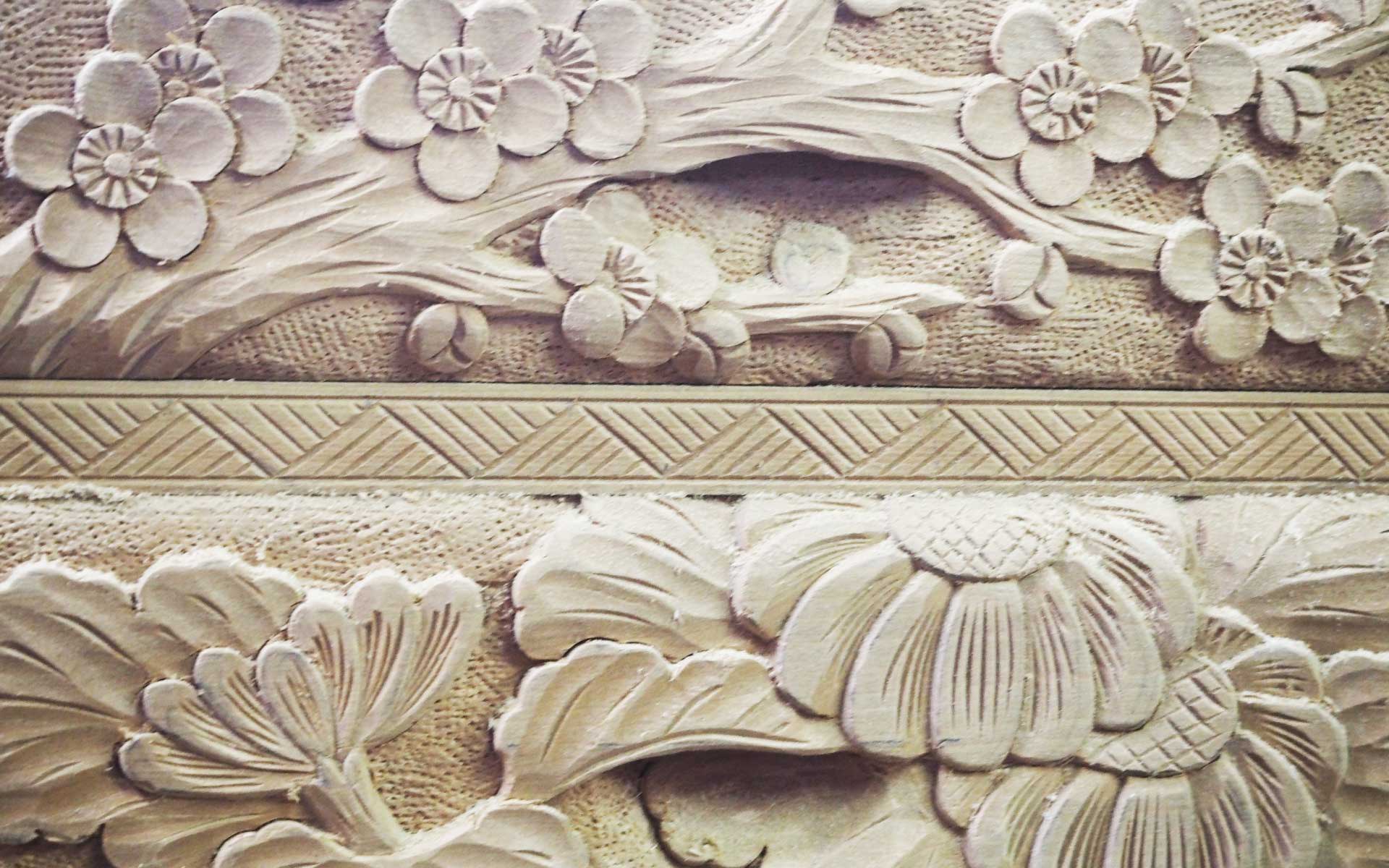
Technique
- Delicate pieces created with unique tools and by hand
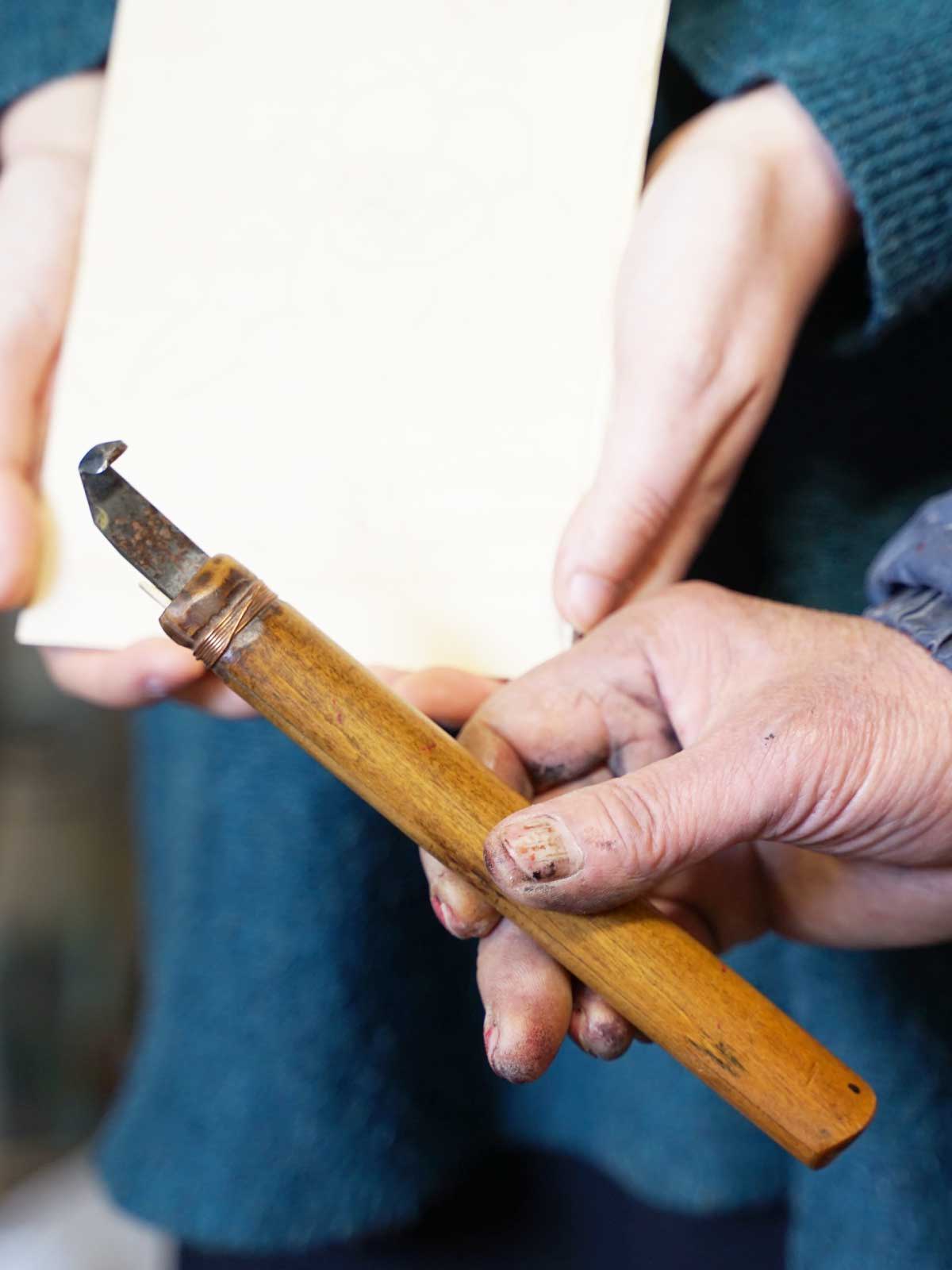
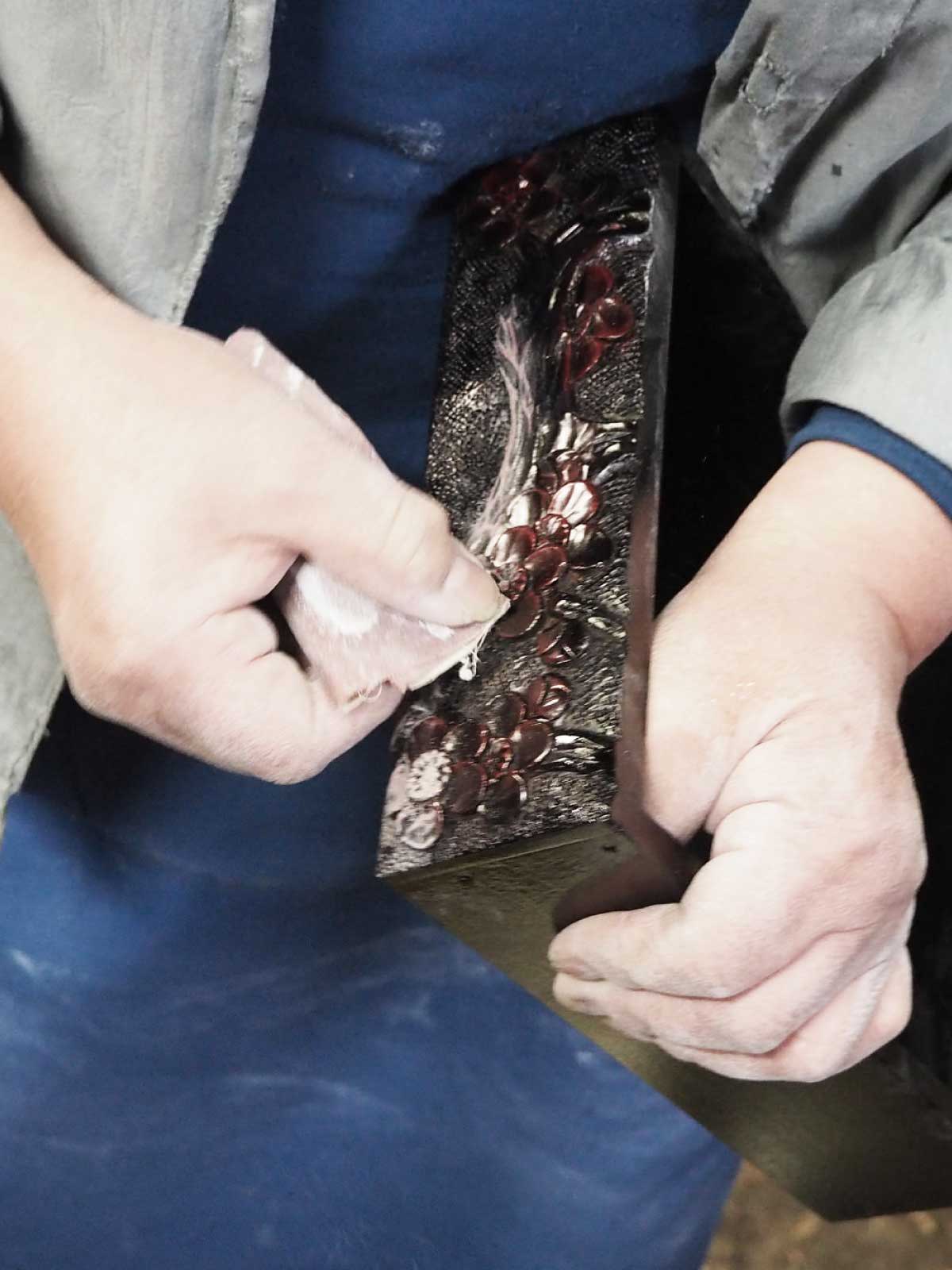
Introduction of Artisan - Mr.Nakagawa
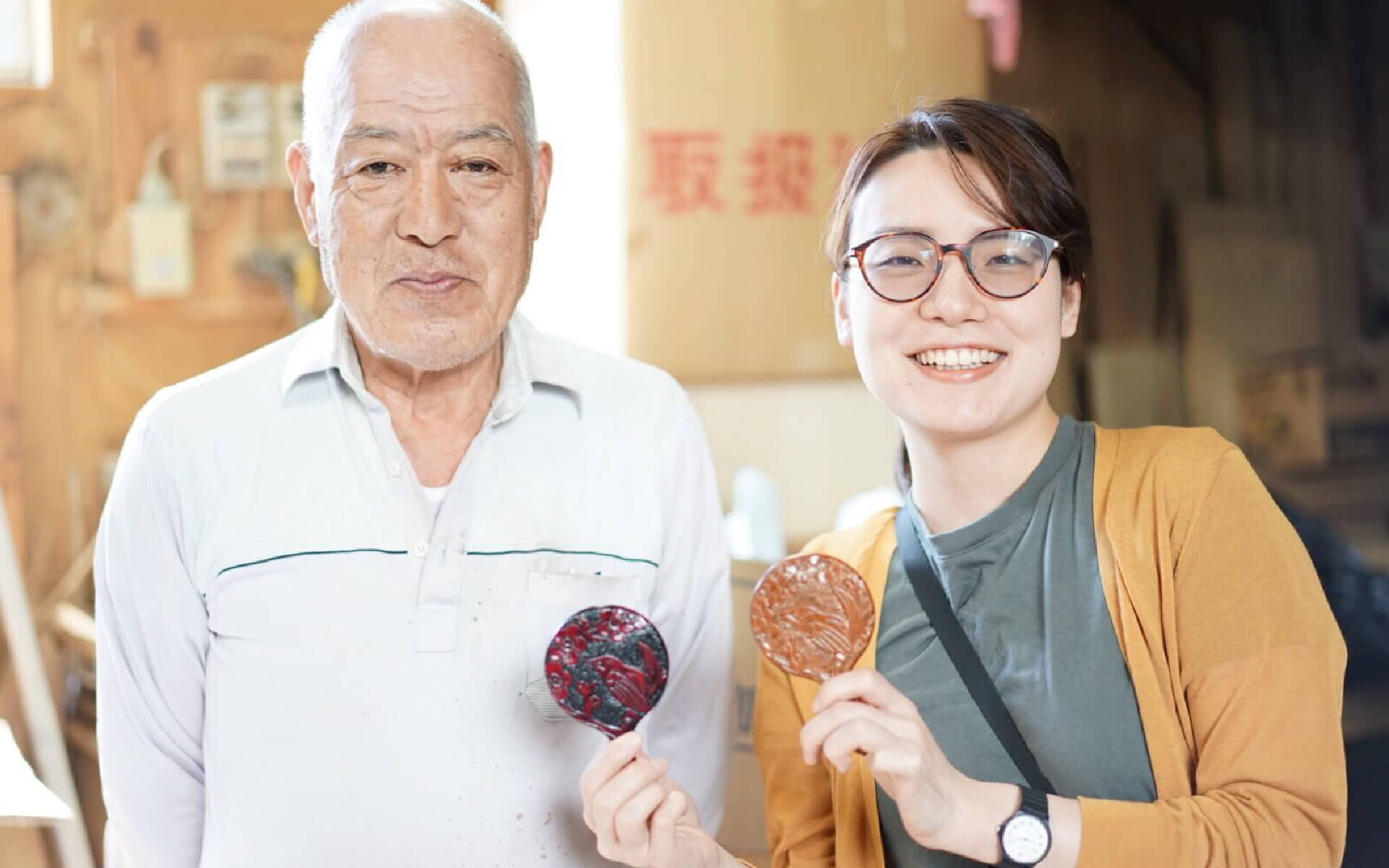
Mr. Nakagawa is an artisan of Nikko-bori.
He and his wife, who is in charge of sharpening, are active artisans who make Nikko-bori items together.
He grew up watching his father, an artisan, from an early age and inherited the tradition.
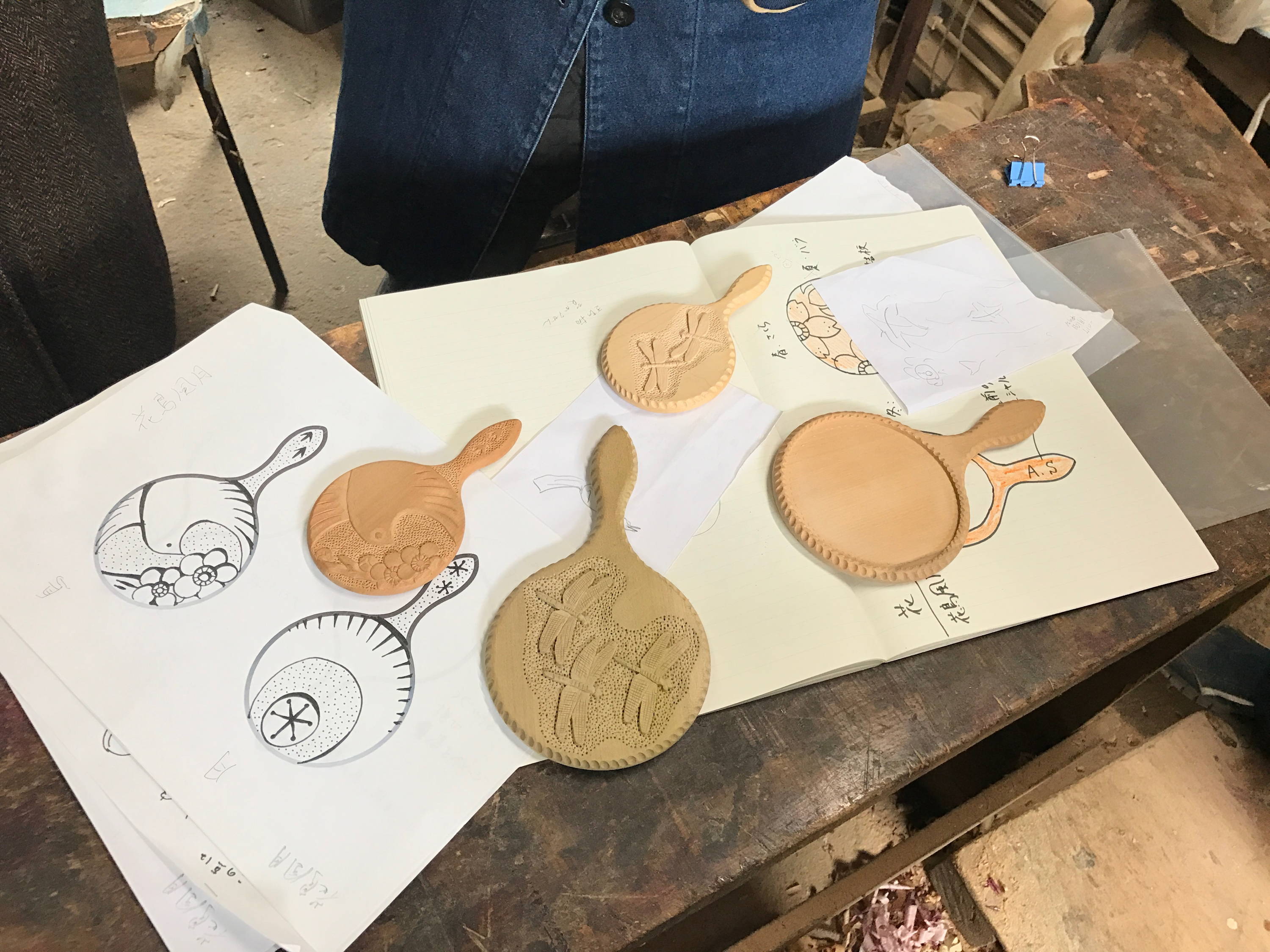
Mr. Nakagawa's work is not only carving.
"The artist's picture and the carved picture are two different things.
From an artist's point of view, a Nikko-bori flower is different from a real flower.
It is true. This is just a design for carving.
I usually try to sketch things that could be motifs.
The patterns for kimono yuzen are very similar."
says Mr. Nakagawa.
He and his wife, who is in charge of sharpening, shared the same thought: "We can't make mistakes (in both scratching and sharpening)."
For example, when carving a flower design, he first carves the main motif of the flower, and then adds leaves and other elements to balance the design while observing the overall balance.
This is a one-shot hand-engraving process that requires a great deal of applied skill.
Even in sharpening, he does not just sharpen the parts according to a rule.
His wife says,
"I shave while checking the condition of black and red. It takes time because we work by hand, thinking about how much red is in the black and how much red is in the red.Each engraver has his or her own habits, so even if the design is the same, we can't just do it the same way."
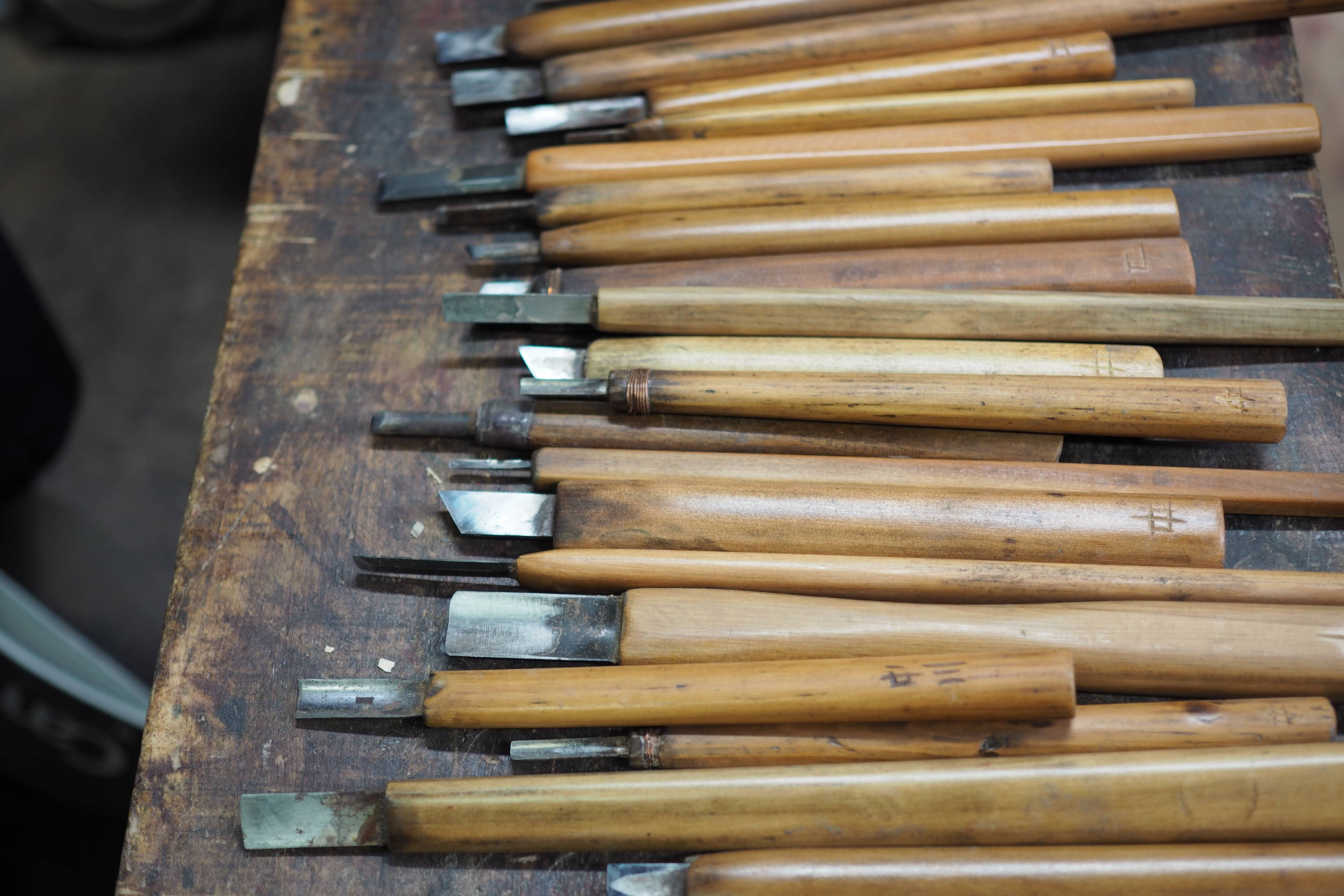
▲Nakagawa's favorite knives with his name and mark. Mr.Nakagawa's artisanal approach is to "make tools for use that are easy to use."
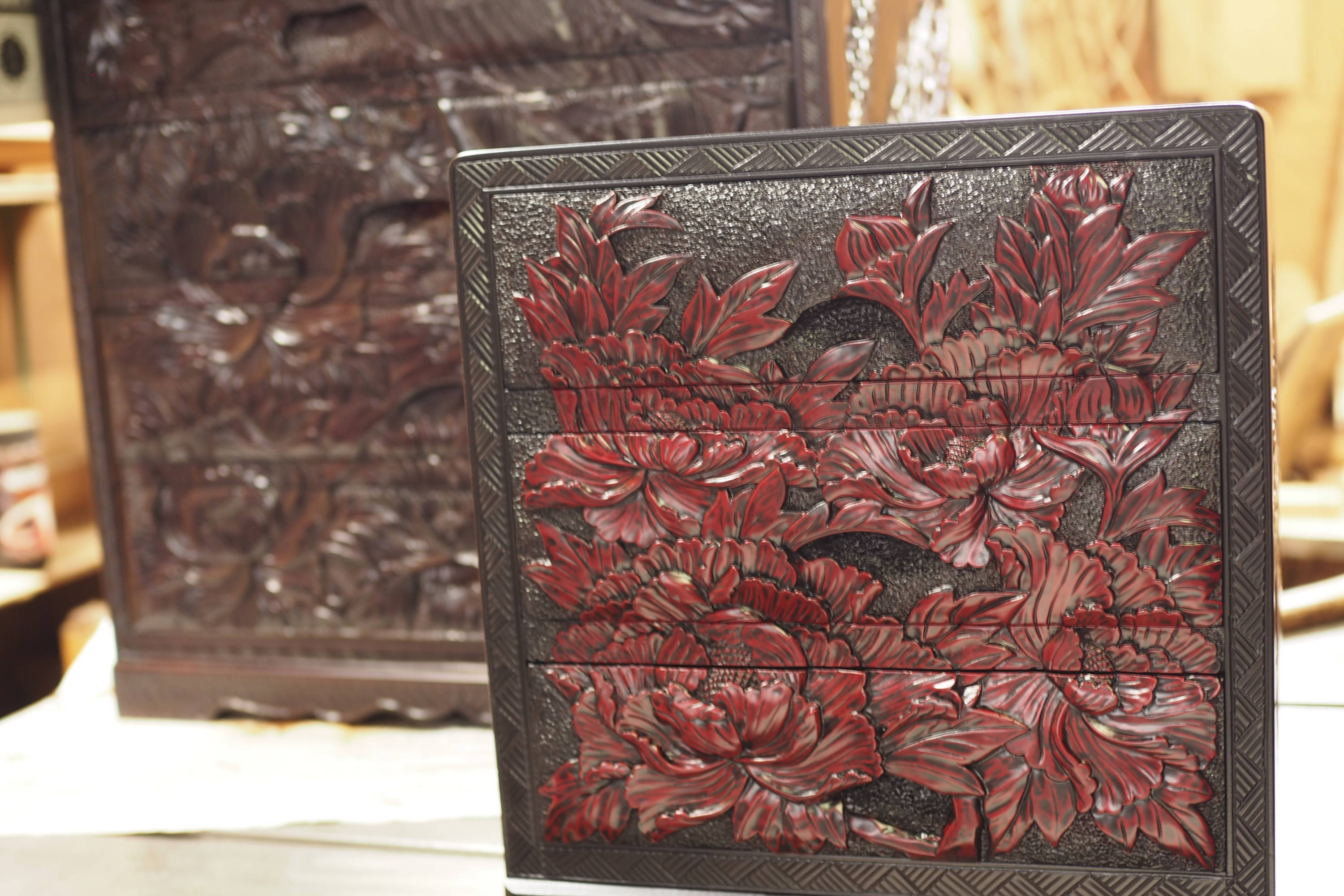
▲One of the charms of Nikko-bori is its three-dimensional and delicate expression.
Nikko-bori is made with traditional and historical techniques and allows you to feel the warmth of human hands.
Mr. Nakagawa has been teaching children the joys of carving through hands-on classes, and we think we will continue to hear more from him through videos and interviews to bring you more of his stories.
Item made by Nikko-bori / Mr.Nakagawa
